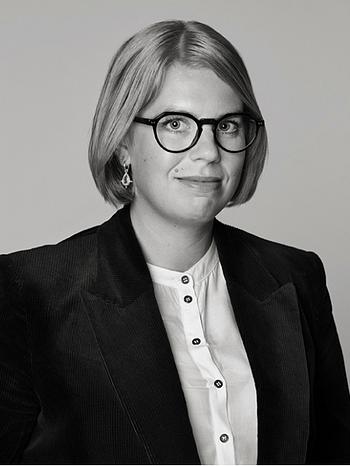Erik Olson
"Jonglören"
Signed Erik Olson and dated 1928. Canvas 55 x 40 cm.
Alkuperä - Provenienssi
Yngve and Martha Dillberg, acquired directly from the artist.
Thence by descent to the present owner.
Näyttelyt
Hallands museum, "Halmstadgruppen före Halmstadgruppen", sommarutställning 18 june - 27 August, 1967, cat. no. 80.
Kirjallisuus
Viveka Bosson, "Halmstad-Berlin-Paris Målar-resa genom 20-talet", 1984, illustrated in black and white p. 213.
Viveka Bosson, "Erik Olson - En sökares vandring", 2001, illustrated in black and white p. 112.
Muut tiedot
"Jonglören" (The juggler) is one of Erik Olson's strongest constructivist compositions and part of a small series of works that the artist created in 1927-28.
Erik Olson was born right into the century of the modern era. The currents of industrialism, socialism and modernism had created a society that was very different from the one his parents’ generation had experienced. Despite growing up in a working-class home, Erik, and his brother Axel, decided early on that they wanted to become artists. Together with their cousin Waldemar Lorentzon, they formed the the artist group Gnistan in 1915.
A decisive event for the three young artists occurs in 1919, when the group Gnistan was spotted by the engineer and art lover Egon Östlund at an amateur exhibition in Halmstad. Östlund introduced them to his protégé Gösta Adrian-Nilsson (GAN). GAN had already made a name for himself internationally and was be the one to introduce the young Halmstad artists to the European avant-garde and to Léger's Académie Moderne in Paris. In early 1924 the two cousins Erik Olson and Waldemar Lorentzon travel to Paris where they rent an apartment at 86, rue Notre-Dame-des-Champs. They become neighbors with both GAN and Isaac Grünewald. Léger's academy is located on the ground floor, and Erik and Waldemar sign up as new students.
At the academy, they get to know Otto G. Carlsund, who takes the two young Swedes under his wings. They explore the Paris nightlife and avant-garde meeting points as Dôme, Rotonde, and La Coupole. Erik feels like he's in paradise and absorbs the new winds blowing in Paris, the Mecca of avant-garde art. Despite living on the edge of existence, he manages to study for the master Léger, and as soon as the opportunity arises, he goes on study trips around Europe where he eagerly absorbs everything from Giotto and Cimabue's monumental art to Kandinsky's abstract paintings.
In the end, money runs out and Erik is forced to return to Sweden to get his finances in order. In 1927 he is back on the Paris scene again. He now seeks out the more purist orientated artists as Ozenfant, Mondrian and Christian Berg. Among his artist friends from Halmstad, Erik Olson is the one who stands out internationally. Not only was Erik the one that Léger chose as one of his personal assistants, Erik was also the only one, not only Swedish, but also Scandinavian who was invited to exhibit at the exhibition Mondrian, de Stilj and their impact at the Marlborogh Gallery in New York in 1964. Erik Olson exhibited regularly with Otto G. Carlsund and Christian Berg in Paris. In November 1928, the trio exhibited in Gothenburg together with GAN. Art historian and GAN connoisseur Jan Torsten Ahlstrand wrote the following about this exhibition in SDS in 1986: "It was no coincidence that GAN chose Christian Berg, Otto G. Carlsund and Erik Olson as co-exhibitors in Gothenburg's art gallery in 1928 - the foremost in the Swedish avant-garde of that time. "
"Jonglören” (The juggler), painted in 1928, is both playful and elegant, the choice of motif and the refined way the colors are set against each other make the viewer instinctively in a good mood. The emphasized cylindrical forms mirror the influences of tubism, an alternative version of Cubism, introduced by the progressive master Léger. The imaginative composition and the ambivalent movement-laden space have elements of so-called "impossible figures". The room is limited architecturally by the rectangles in the background and by the chair and table on either side of the figure. At first glance, a form appears in the surface plane, the next moment it recedes into the background in relation to the surrounding objects. Erik Olson has worked with color and form to achieve harmony and movement in this modernist masterpiece!
















































